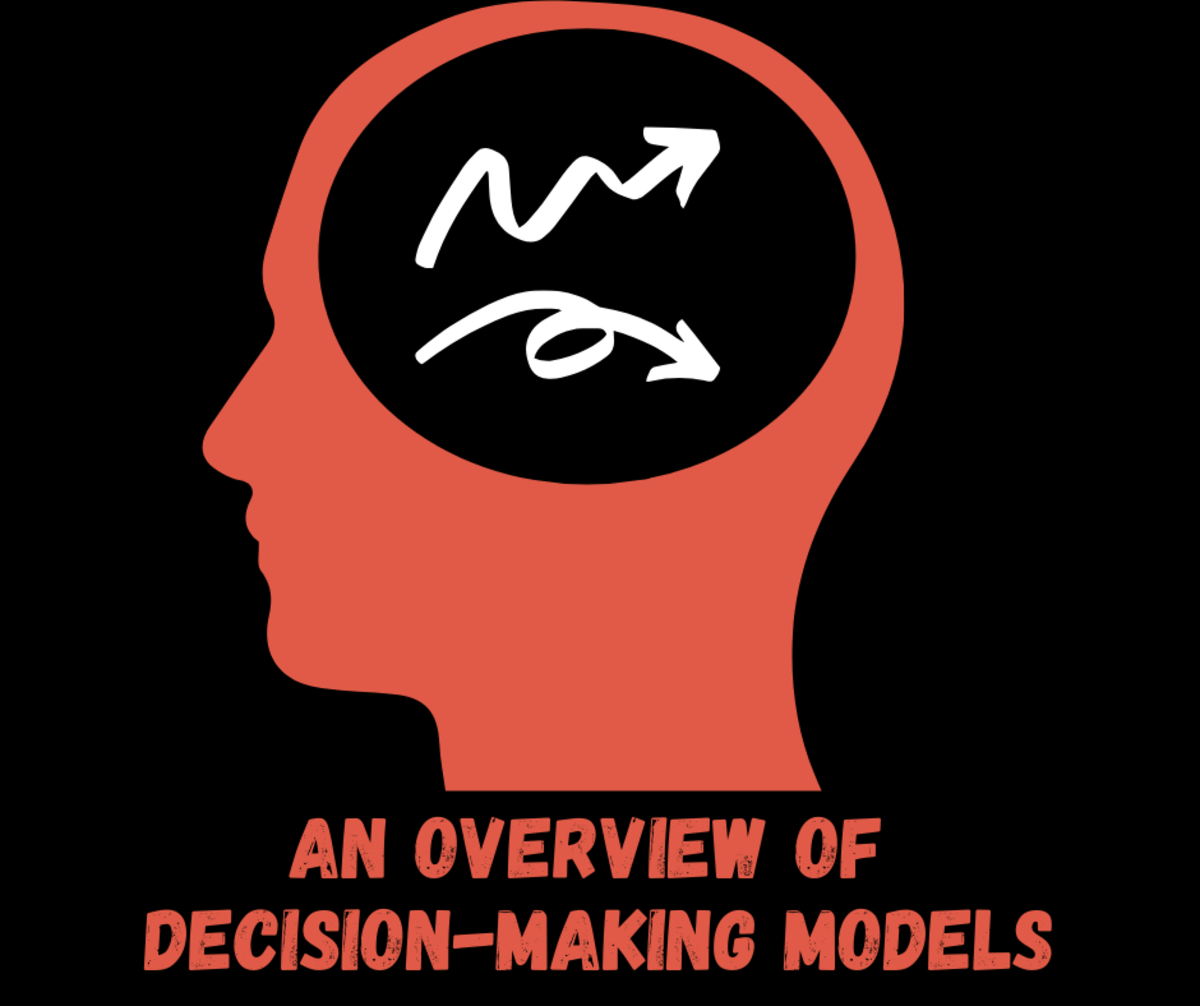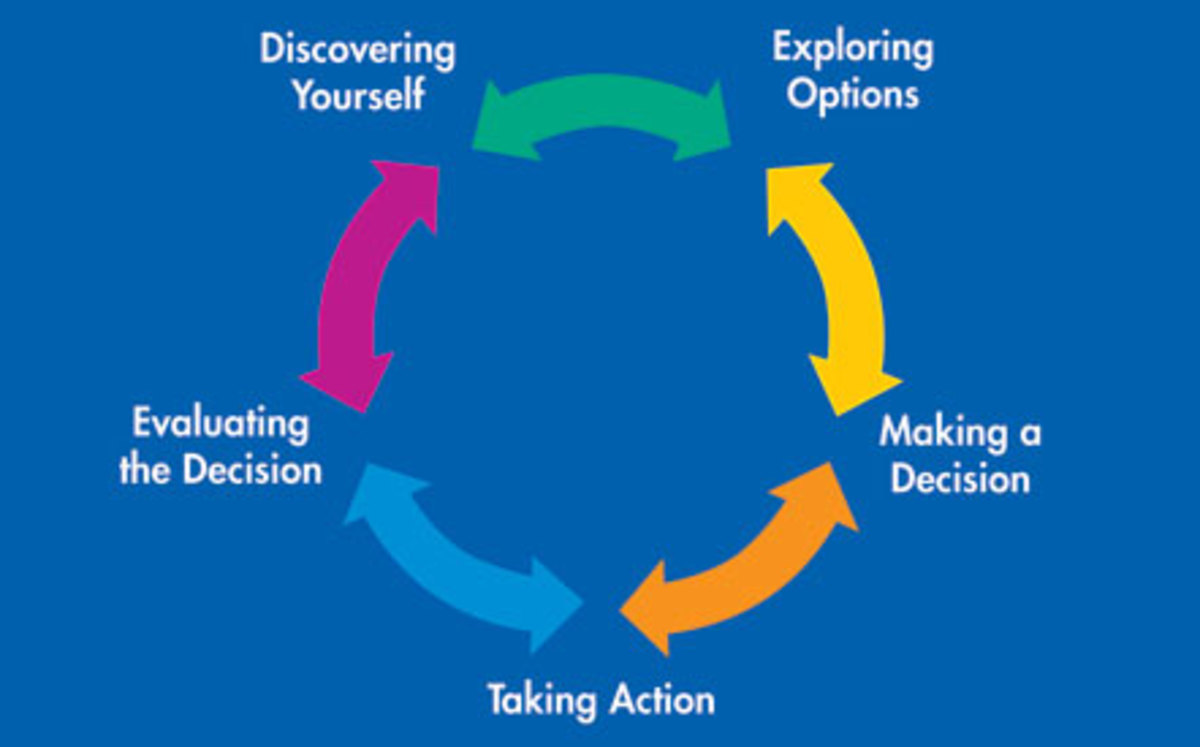Decision making tools

Managers, programmers, designers, etc. - they all need to make decisions.
We will be using two terms more or less interchangeably-decision-making and problem solving. For our purposes, we make decisions to solve problems; and we solve problems by making decisions. Some people see decision-making as a step in problem solving. McCall and Kaplan make a good argument that decision-making is action, and that decision-making occurs all during the problem solving process.
Problem-Solving Tools and Techniques
Just how do we identify the problem? How do we frame alternatives? The table below lists several tools to help us do just that, and more. Some of these tools are used specifically to get at problem causes (for example, cause and effect diagrams). Other tools help groups function as groups (for example, multivoting).
Decision-Making
In Virtual Salt (July 2, 1998), Robert Harris defines two types of decision-making:
1. Decision making is the study of identifying and choosing alternatives based on the values and preferences of the decision maker. Making a decision implies that there are alternative choices to be considered, and in such a case we want not only to identify as many of these alternatives as possible but to choose the one that best fits with our goals, desires, lifestyle, values, and so on.
2. Decision making is the process of sufficiently reducing uncertainty and doubt about alternatives to allow a reasonable choice to be made from among them. This definition stresses the information gathering function of decision making. It should be noted here that uncertainty is reduced rather than eliminated. Very few decisions are made with absolute certainty because complete knowledge about all the alternatives is seldom possible. Thus, every decision involves a certain amount of risk.
In portions of the book, Use Both Sides of Your Brain, by Tony Buzan, the creator of mind-maps, he discusses mind-maps, of course, but it has some marvelous ideas about thinking, creativity, and problem-solving as well. Buzan gives some excellent tips that make a lot of sense.
Software
Table of Problem-Solving Tools and Techniques
Affinity Diagram
Bar Chart
Benchmarking
Brainstorming
Cause-and-Effect (Fishbone) Diagrams
Cause-and-Effect Diagram with Addition of Cards
Cause Screening
Check Sheets
Criteria Matrix
Control Chart
Decision Tree
Flow Chart
Following the Rules
Force Field Analysis
Group Think
Histograms
Imagining
Importance Weighting
Influence Diagram
Intuition
Line Graph
Metaphorical Thinking
Mind Mapping
Multivoting
Nominal Group Technique
Pareto Chart
Pie Chart
Plan-Do-Check-Act Cycle
Provocation
Run Chart
Requirements Analysis
Scatter Diagram
Starbursting
Value Analysis
Visualizing
Let's look at some of these processes, including some that apply to Learning Teams.
Plan-Do-Check-Act-PDCA
PDCA is an approach to structured problem solving, particularly focused on continuous improvement of existing processes. The "4W & 1H & 1C" matrix is an excellent tool to use during the problem-solving process.
Total Quality Management-TQM
TQM is a process (some would say a secular religion), pioneered by Malcolm Baldridge, focused totally on quality in business practices. There are international standards that TQM followers advocate. Best business practices quote TQM. The idea is that quality is a process that can be learned; it's a process that is cyclical - we learn from executing TQM, so that our next execution of TQM is better than the last.
Brainstorming
I think brainstorming is an underrated technique. It lets thoughts flow; it removes barriers to thought. Years ago, TRW, the aerospace company, had a print ad that showed three rows of light bulbs, three bulbs in each row (for a total of nine light bulbs). Each light bulb in turn is dimmer than the previous one; the last light bulb is out. The brightest light has a caption, "I have an idea..." The second, slightly dimmer light bulb, has a caption, "A word of caution..." By the time we get to the last light bulb, which is totally extinguished from all the words of discouragement, the caption reads, "Oh, it was only an idea."
The ad does a wonderful job of showing how ideas can get killed before they're even looked at. Not much critical thinking going on, is there? Brainstorming is a technique that helps prevent turning off the light bulb. Brainstorming is also very good at generating lots of ideas.
Here's an explanation of how to brainstorm.
Mind Maps
Brainstorming is excellent for generating ideas. Mind maps, created by Tony Buzan, is a technique that helps put some structure into your brainstorming ideas, without restricting the ideas into a linear format. A mind map is a visual tool that engages both sides of the brain
Cause and effect
One of the first steps in the decision-making process is defining the problem. It's difficult sometimes to distinguish the two. A cause-and-effect diagram can help.
Groupthink
Working in a group has advantages and disadvantages. The advantages are neatly summed up in the aphorism, "Two heads are better than one." However, the follow-on is what leads to problems, "If two heads are good, then 10 must be much better." That's not always true, is it? (See also, "Too many cooks spoil the broth.")
Affinity diagrams
You're faced with a problem, so you and your group brainstorm. Now you have 250 ideas. You winnow out the obviously silly ones, only to find out two months later that one of the silly ones was the very idea you needed!
Affinity diagrams won't prevent throwing out the allegedly silly solution in early stages, but they will help. An affinity diagram is an effective language tool that generates ideas, opinions, issues, etc. The process enables team/group members to participate in the solution to an issue rather than simply restating the problem. I think they're better, though, at getting the team to start putting their collective arms around the problem; they help the team start consolidating their thoughts, to start putting some order into the chaos of the brainstorming results (and maybe to not ignore supposedly silly ideas!).
Multivoting
Multivoting is a technique that teams can use to help move to consensus, Multivoting:
- helps reduce a large number of items (e.g., a list of themes, or the results of brainstorming) to a manageable few (usually three to five);
- helps accomplish this "list reduction" quickly and with a high degree of group agreement;
- eliminates individuals' close identification with the item.
The basic idea is that multivoting gets the group to decide, as a group, what items are important, downplaying the desires of strong individuals. There are several ways to implement multivoting. One important note: never multivote down to only one item! This defeats the purpose of multivoting, which is to reduce a list to a manageable size for further analysis, not to select "the winner."
Forces of Influence
Remember that the forces of influence must be taken into account. Usually, the only thing you cannot do with these forces is ignore them! One of the tools, force field analysis (developed by Kurt Lewin), is useful in exposing the forces of influence. Once brought to the fore, these forces are easier to include in our analysis
Fallacies
Fallacies are tough -- tough to spot, tough to fix, tough to agree on. The Master List is a nice list to have for reference, but not necessarily very good if you're unfamiliar with the fallacies themselves. Sometimes it’s difficult to pigeon-hole fallacies, but that doesn’t mean they should be ignored. No matter what the name of the fallacy, it is a detriment to making a sound decision.
Critical thinking is essential in decision-making. You must question your own assumptions. You must acknowledge your emotion and bias. You must look at all reasoning to root out fallacies.









